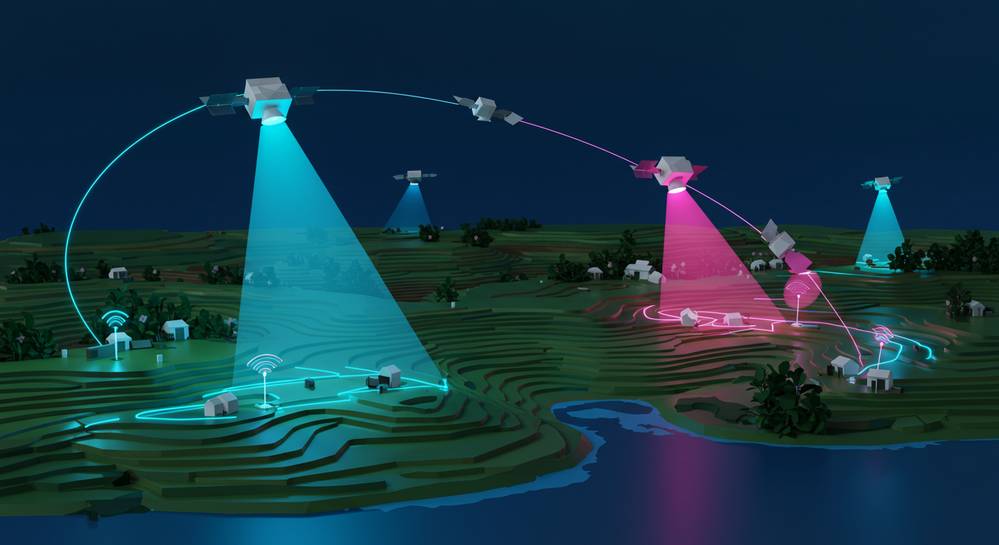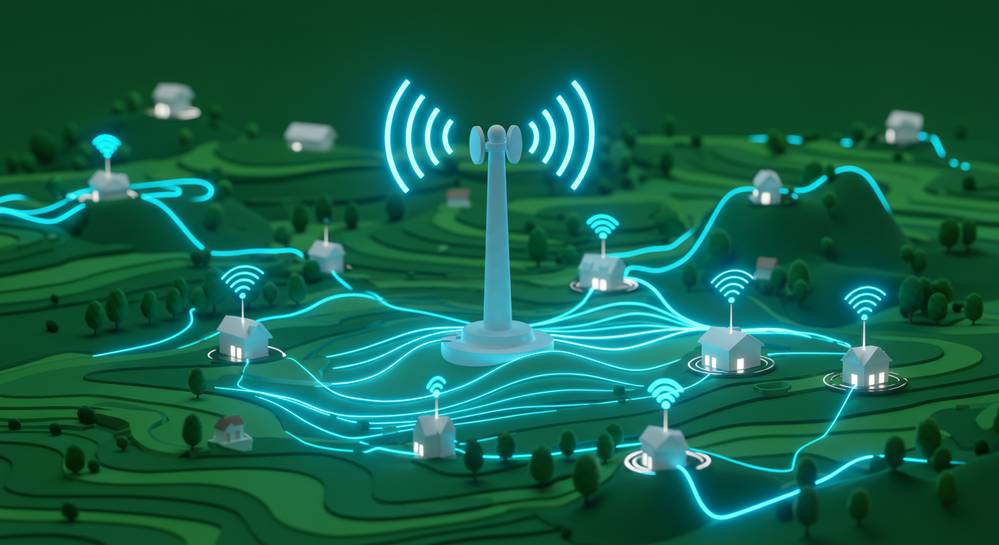For too long, rural communities have been on the wrong side of the digital divide, struggling with slow, unreliable internet. This gap, however, is closing faster than ever. The future of internet connectivity in rural areas is not a distant dream; it is a rapidly unfolding reality driven by groundbreaking technologies. This article explores the innovations set to redefine rural access for good.
The rise of low earth orbit (LEO) satellite internet

How LEO satellites redefine rural internet access
Perhaps the most significant leap shaping the future of internet connectivity in rural areas comes from Low Earth Orbit (LEO) satellite constellations. Unlike traditional geostationary satellites, which cause significant delays or latency, LEO systems operate much closer to Earth. This proximity drastically improves speed and responsiveness. According to a 2024 report by the FCC, LEO latency can be as low as 20-40ms, comparable to ground-based broadband and a huge improvement over the 600ms+ of older satellites. This makes modern digital life a reality for many remote locations.
Companies are deploying thousands of small satellites, creating a global mesh of internet coverage. For a rural user, this means access to high-speed service without needing extensive ground infrastructure like cables. This model effectively bypasses one of the biggest historical barriers to bridging the digital divide and technology access. The key advantages are clear.
- Lower Latency: Drastically reduced signal travel time enables real-time applications.
- Higher Speeds: Offering download speeds that are competitive with urban cable internet.
- Increasing Availability: The network of satellites is constantly growing, expanding coverage.
The role of 5g and fixed wireless access (FWA)

How 5G and FWA bridge the last-mile gap
While satellites cover the skies, 5G technology and Fixed Wireless Access (FWA) are revolutionizing ground connectivity. This approach is vital for the future of internet connectivity in rural areas. Instead of laying expensive cables, providers install a 5G tower that wirelessly broadcasts a high-speed signal to a home receiver. This method is far more cost-effective and rapid for deploying broadband in sparsely populated regions. It turns a mobile technology into a powerful home internet solution.
The core strength of 5G FWA is its ability to solve the infamous last-mile problem. It bypasses the prohibitive cost of running fiber optic cable for just a few households. According to a 2025 analysis from the GSMA, FWA can reduce last-mile deployment costs by up to 40% compared to fiber in rural settings. This makes it one of the most practical and scalable emerging technologies that will change the way we use the internet.
- Cost-Effective: Significantly reduces infrastructure investment compared to physical fiber.
- Rapid Deployment: Allows providers to connect entire communities in weeks, not years.
- High Performance: Delivers fiber-like speeds and low latency for modern digital needs.
Expanding fiber optics and government initiatives
Strategic fiber expansion and public support
Fiber optic cable remains the gold standard for internet speed and reliability, offering unparalleled performance. While laying fiber to every rural home is often impractical, its strategic expansion is a critical piece of the puzzle. Government funding and public-private partnerships are essential for the future of internet connectivity in rural areas. Programs are helping to build foundational fiber networks, or backbones, that other technologies like 5G can then use to deliver service.
This hybrid approach is key. Fiber can be run to a town center or a community hub, which then distributes the connection wirelessly. This makes the investment in fiber more efficient while still extending its benefits to a wider rural population. It is a prime example of undefined by creating smarter, more accessible infrastructure. This approach ensures long-term viability for rural networks.
- Unmatched Performance: Provides the fastest and most reliable foundation for all other connections.
- Efficient Investment: Public funds build shared infrastructure that benefits entire communities.
- Future-Proof Networks: Fiber backbones can support growing data demands for decades to come.
The socioeconomic impact of bridging the digital divide

Connecting rural areas is about more than just faster downloads; it is a catalyst for profound socioeconomic change. Reliable internet access empowers communities by enabling new opportunities that were previously exclusive to urban centers. This transformation is the true promise behind improving the future of internet connectivity in rural areas. The impact is felt across every aspect of life, from economic stability and education to personal health and civic engagement, creating a more equitable society.
- Economic Growth: Enables remote work, supports local entrepreneurs in starting online businesses, and provides access to global markets for farmers and artisans.
- Enhanced Education: Gives students access to online learning resources, virtual classrooms, and digital tools, leveling the educational playing field.
- Improved Healthcare: Makes telehealth a reality, allowing residents to consult with specialists remotely and access critical health information without long journeys.
- Stronger Communities: Fosters social connection, civic engagement, and access to essential government services online, strengthening local bonds.
The journey to universal connectivity is powered by a convergence of technologies, from satellites in the sky to fiber and 5G on the ground. This multi-faceted approach ensures that rural areas are not left behind in the digital age, unlocking unprecedented opportunities for growth and innovation. For more insights on transformative tech, explore Modern Techera.



